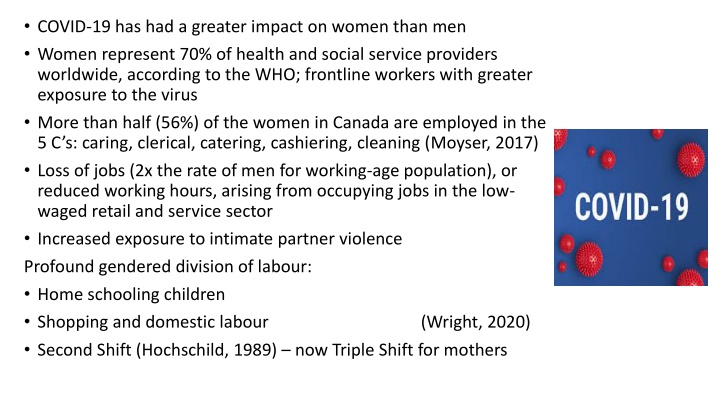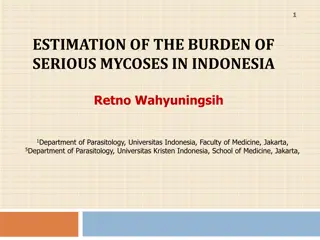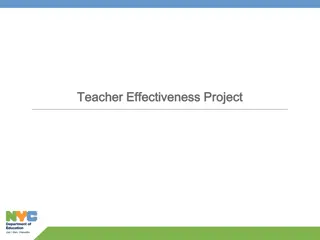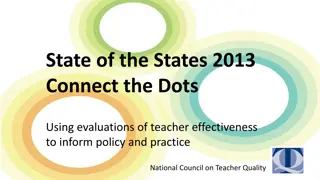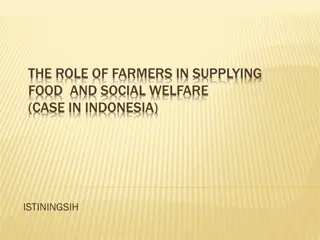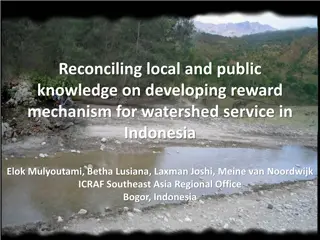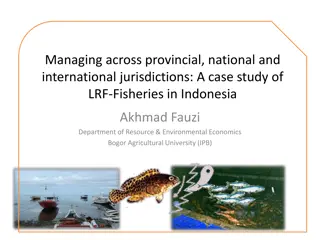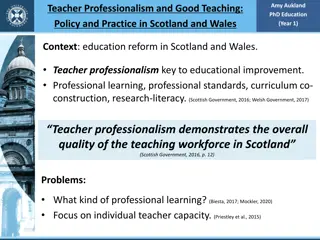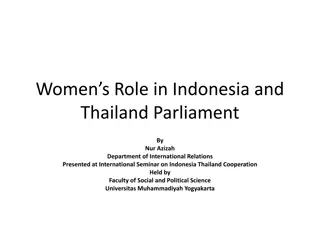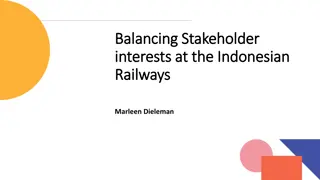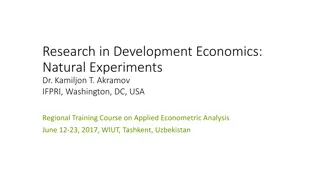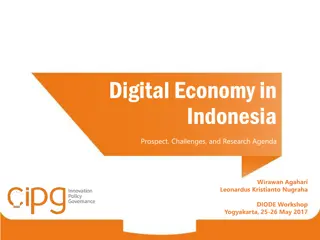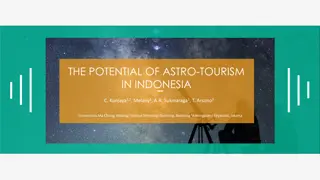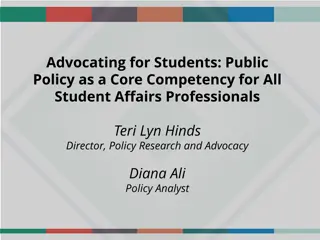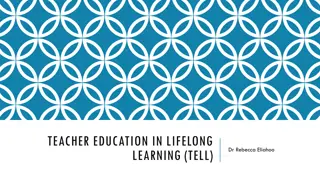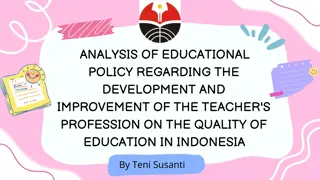Impact of Educational Policy on Teacher Development in Indonesia
Correlation between educational policy, teacher professionalism, and the quality of education in Indonesia. Analyze the effectiveness of policies aimed at enhancing teacher skills and knowledge to improve educational outcomes.
Download Presentation

Please find below an Image/Link to download the presentation.
The content on the website is provided AS IS for your information and personal use only. It may not be sold, licensed, or shared on other websites without obtaining consent from the author.If you encounter any issues during the download, it is possible that the publisher has removed the file from their server.
You are allowed to download the files provided on this website for personal or commercial use, subject to the condition that they are used lawfully. All files are the property of their respective owners.
The content on the website is provided AS IS for your information and personal use only. It may not be sold, licensed, or shared on other websites without obtaining consent from the author.
E N D
Presentation Transcript
COVID-19 has had a greater impact on women than men Women represent 70% of health and social service providers worldwide, according to the WHO; frontline workers with greater exposure to the virus More than half (56%) of the women in Canada are employed in the 5 C s: caring, clerical, catering, cashiering, cleaning (Moyser, 2017) Loss of jobs (2x the rate of men for working-age population), or reduced working hours, arising from occupying jobs in the low- waged retail and service sector Increased exposure to intimate partner violence Profound gendered division of labour: Home schooling children Shopping and domestic labour (Wright, 2020) Second Shift (Hochschild, 1989) now Triple Shift for mothers
Relative to men, women are more likely to: Experience poverty (Smith-Carrier, 2017) Shoulder the disproportionate share of caring labour (Armstrong & Laxer, 2006) and provisioning work (Neysmith et al., 2012) Be precariously employed, in minimum wage jobs Be paid less for the same work Receive less in pension programs (Vosko, 2006) Be abused or trafficked (McLaughlin, 2020) Multiple intersections occupied by women (based on age, race, class, disability, and so forth) compound disadvantage and lead to increasingly more harmful health, social and health outcomes (e.g., Smith-Carrier, 2017) Women
Racialized Women Members of racialized groups 2-3x more likely to experience poverty relative to other Canadians - racialization of poverty (Galabuzi, 2005) Few data on health and race in Canada a gap that needs to be filled Over-representation of Black people among front-line workers - up to 80% of women working as aides in LTC homes in Montreal are racialized women (Bouka & Bouka, 2020) Indigenous Women Ongoing systemic inequalities on reserves has resulted in greater exposure to COVID-19 for Indigenous women and their families due to overcrowded housing issues and lack of access to clean water for regular handwashing (Carling & Mankani, 2020) Over 80% of people on reserves have median income below low-income measure (Press, 2017)
Offered as an (adequate, non-conditional) individual benefit (not household), BI could enable women s economic independence Women would have greater choice: to further their education/training, start a business, stay at home for a time to raise a family, leave a toxic job for a better one, etc. BI could give women more bargaining power in employment (Halpenny, 2019) Unpaid work would receive recognition, not as a payment for care work but as a universal support for care work, providing everyone with a more effective opportunity to engage in it (Baker, 2008, p. 4) Employment
A basic income would ensure mothers access to adequate housing options and would equip them with the financial wherewithal to improve their housing prospects Would provide more housing choices that meet families bedroom and space requirements; increases choice in neighbourhood selection and accommodation closer to important amenities (Smith-Carrier & Benbow, 2019) Housing
Access to finances (income) is one of the most significant factors determining whether a woman stays or leaves an abusive relationship (Wendt & Hornosty, 2010) A basic income would provide more choice for women if, and when, fleeing intimate partner violence, as well as in choosing a housing neighbourhood that ensure the family s access to safety (Smith-Carrier & Benbow, 2019) Intimate Partner Violence
Offers more flexibility in determining ones hours of work, with resources to pay public and/or private childcare providers (e.g., other family members) Some research suggests women may opt of work temporarily after the birth of children, but return after their children s formative years (see Forget, 2011) Child Care
Income is the single most important determinant of health the lack of it results in a multitude of adverse health consequences (Raphael, 2011) Research shows a strong connection between maternal and child health outcomes (Fitzsimons et al., 2017) BI would improve the health and well-being of mother and child, including the food security of the family The mental health of women would improve as they experience the assurance of income stability (Smith-Carrier & Benbow, 2019) Health and Well-being
Common critiques (1) the cost argument; (2) the work disincentive argument, and (women specifically) (3) the argument that BI could reify/reinforce a gendered division of labour (Zelleke, 2008) Yet, these are not borne out in research BI is not costly relative to the costs of our current system (Smith-Carrier & Green, 2017) BI does not translate into reduced labour force participation (Forget, 2011) It could, in fact, allow for a smoother transition to a more gendered division of labour (e.g., a universal caregiver model; Fraser, 1994) Basic Income and Women
BI is not a panacea it would not expressly resolve affordable housing issues, remedy the shortage of quality childcare facilities or eliminate gender inequality in the short-term (the latter, see Regehr, 2014) It would, however, immediately address the feminization of poverty that continues to beleaguer women in Canada (Kwok & Wallis, 2008) And it would give women more choices and opportunities in the many important domains of their lives Limitations
References References Armstrong, P., & Laxer, K. (2006). Precarious work, privatization, and the health care industry: The case of ancillary workers. In L. F. Vosko, Ed., Precarious employment: Understanding labour market insecurity in Canada (pp.115-138). Montreal: McGill-Queen s University Press. Baker, J. (2008). All things considered, should feminists embrace basic income? Basic Income Studies, 3(3). doi:https://doi.org/10.2202/1932-0183.1129 Chant, S., & Sweetman, C. (2012). Fixing women or fixing the world? Smarteconomics , efficiency approaches, and gender equality in development. Gender & Development, 20(3), 517-529. Fitzsimons, E., Goodman, A., Kelly, E., & Smith, J. P. (2017). Poverty dynamics and parental mental health: Determinants of childhood mental health in the UK. Social Science & Medicine, 175, 43-51. Forget, E. L. (2011). The town with no poverty: The health effects of a Canadian guaranteed annual income field experiment. Canadian Public Policy, 37(3), 283-305. Fraser, N. (1994). After the family wage: Gender equity and the welfare state. Political Theory, 22(4), 591-618.
References References Halpenny, C. (2019). Basic income: A feminist proposal? Informing feminist analyses through the lived experience of Ontario Basic Income Pilot participants [Master s thesis, University of Cambridge]. Moyser, M. (2017). Women and paid work. Statistics Canada. https://www150.statcan.gc.ca/n1/pub/89-503-x/2015001/article/14694-eng.htm Neysmith, S., Baker-Collins, S., & Reitsma-Street, M. (2012). Beyond caring labour to provisioning work. Toronto: University of Toronto Press. Raphael, D. (2011). Poverty in Canada: Implications for health and quality of life. Toronto: Canadian Scholars Press. Regehr, S. (2014). Basic income and gender equality: Reflections on the potential for good policy in Canada. Basic Income Canada Network. https://basicincome.org/bien/pdf/montreal2014/BIEN2014_Regehr.pdf Robeyns, I. (2016). Will a basic income do justice for women? A contribution to the Symposium on P. Van Parijs s Real Freedom for All in Analyse & Kritik, 22(2). doi:https://doi.org/10.1515/auk-2001- 0108 Smith-Carrier, T. (2017). Reproducing social conditions of poverty: A critical feminist analysis of social assistance participation in Ontario, Canada. Journal of Women, Politics & Policy, 38(4), 498- 521.
References References Smith-Carrier, T., & Benbow, S. (2019). Access to a basic income: Exploring a matricentric feminist approach to poverty alleviation for mothers in Ontario. Journal of the Motherhood Initiative: Matricentric Feminism, 10(1-2), 45-58. Smith-Carrier, T. A., & Green, S. (2017). Another low road to basic income? Mapping a pragmatic model for adopting a basic income in Canada. Basic Income Studies, 12(2). Vosko, L. F. (Ed.). (2006). Precarious employment: Understanding labour market insecurity in Canada (pp. 43-66). Montreal: McGill-Queen's University Press. Wallis, M. A., & Kwok, S-M. (Eds.). (2008). Daily struggles: The deepening racialization and feminization of poverty in Canada. Toronto: Canadian Scholars Press.
References References Wendt, S., & Hornosty, J. (2010). Understanding contexts of family violence in rural, farming communities: Implications for rural women s health. Rural Society, 20(1), 51-63. Wright, T. (2020, April 10). COVID-19 has greater impact on women advocates say. National Observer. https://www.nationalobserver.com/2020/04/10/news/covid-19-has- greater-impact-women-advocates-say Zelleke, A. (2008). Institutionalizing the universal caretaker through a basic income? Basic Income Studies, 3(3).
